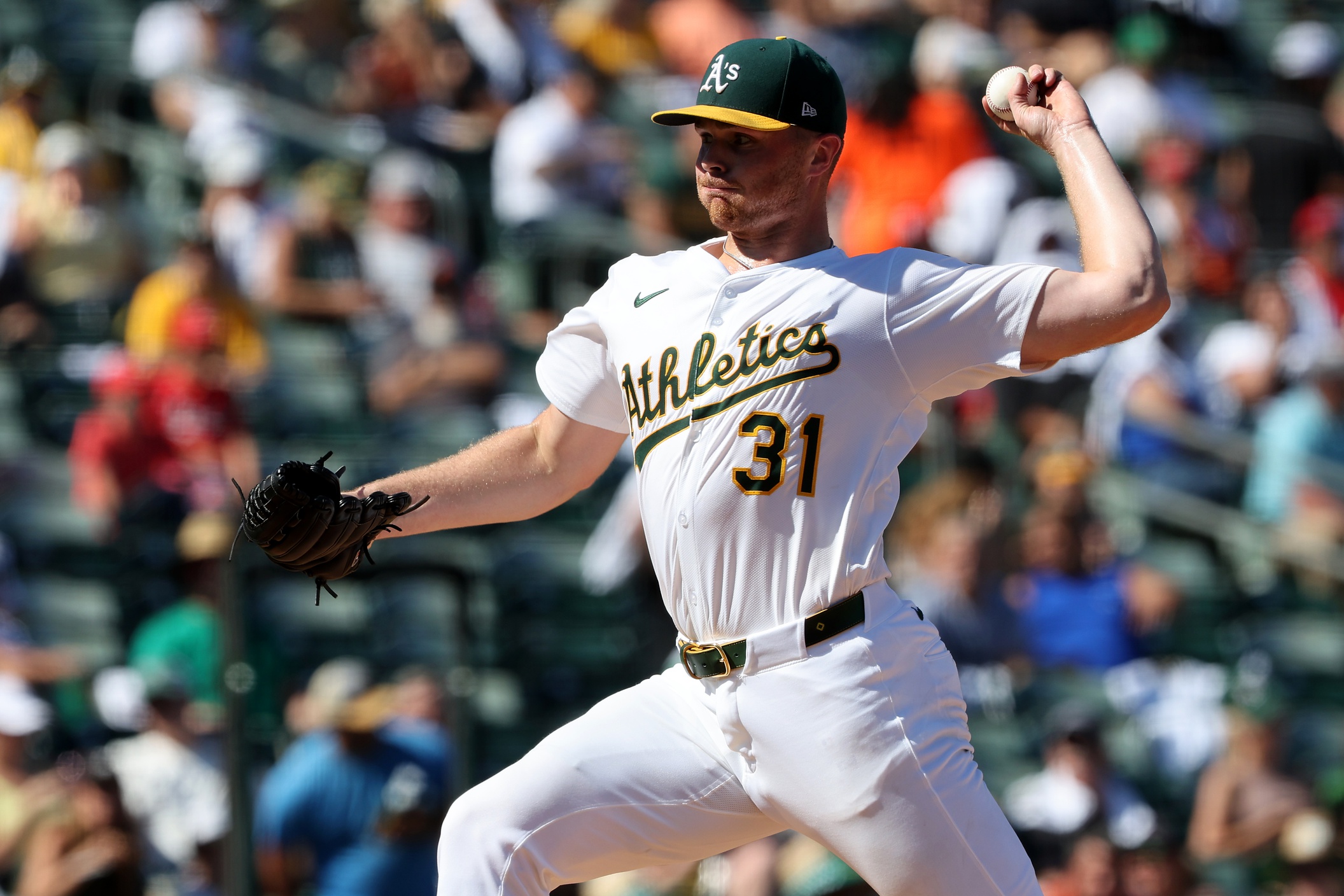Rick Renteria's days as a White Sox manager were probably numbered even before his team fell to the then-Oakland Athletics in the 2020 Wild Card Series, but his unwillingness to give credence to the opener strategy made it a little easier for Rick Hahn to sell the public on letting him go.
The last image of Renteria in a White Sox dugout was him bent over at the waist, hands on his knees, as he watched one reliever after another fail to deliver the extra inning he needed in Game 3 after Garrett Crochet departed with forearm tightness. The pitchers failed more than anybody on that day, but Renteria passed on so many chances to better prepare himself for a game where he needed to win without a starter he trusted, and that's a rare area that was entirely in his control.
Renteria just didn't seem to see the opener as a legitimate alternative path for using two pitchers through six or seven innings. He most clearly stated his m.o. back in 2019 ...
“For me, if you use an opener, it’s just potentially a bullpen day,” Renteria said. “I think that openers, and this is just one man’s opinion, speaks to the state of your pitching staff in general. I think most people that are solidified in their starting rotation don’t even think about it, to be honest.”
... and on the occasion when he successfully deployed the opener/bulk boy arrangement, it was driven by the temporary limitation of a rehabbing starter on pitch-count restrictions, not a curiosity about mitigating inherent weaknesses. Whether it was a stigma that using an opener was conceding a developmental failure, or it simply made him itchy to be using a second pitcher in two innings, he could never embrace the alternate course.
The opener conversation took a back seat over the next two managers, for different reasons. Tony La Russa was provided a rotation full of guys capable of making 20-plus starts (and also bended when analytics staffers suggested a rookie Davis Martin could use a smoother runway), and the situation immediately deteriorated on Pedro Grifol beyond the point where any individual strategic choice could register.
But Will Venable has taken over a White Sox team with a rotation with a similar constitution to 2019's, with a handful of young pitchers who have the potential to stick, complemented by a veteran acquired to absorb innings every fifth day. It turns out that Martín Pérez lacked Iván Nova's durability, but the rest of the picture is holding together thus far, even if you're skeptical that anybody is going to earn Cy Young votes the way Lucas Giolito and Dylan Cease did.
And when Venable was presented with the same kind of situation Renteria encountered, with multiple pitchers struggling to find their footing, he had no problem deploying a left-handed opener for Sean Burke against the now-Sacramento Athletics last Friday. And when Friday worked out well enough, he did it again with Jonathan Cannon and Martin, and to even richer rewards.
Burke, Cannon and Martin pitched as long as they normally would. They just started in the second inning, meaning the lineups they saw had the top of the order batting at the bottom:
| Burke | Cannon | Martin |
|---|---|---|
| JJ Bleday | Miguel Andujar | JJ Bleday |
| Jacob Wilson | JJ Bleday | Luis Urías |
| Nick Kurtz | Luis Urías | Nick Kurtz |
| Gio Urshela | Nick Kurtz | Max Schuemann |
| Luis Urías | Gio Urshela | Lawrence Butler |
| Lawrence Butler | Jhonny Pereda | Brent Rooker |
| Brent Rooker | Jacob Wilson | Shea Langeliers |
| Tyler Soderstrom | Brent Rooker | Tyler Soderstrom |
| Shea Langeliers | Tyler Soderstrom | Jacob Wilson |
And whether the given pitcher needed an easier first inning slate to find footing, or needed help limiting the exposure to power lefties, they all seized the day by getting the game from the second inning to the seventh, and beyond.
Below are the combined lines from the opener and the starter, which is basically as productive as anybody could have expected.
The most refreshing part? Venable didn't treat it as a big deal. Speaking about openers on Tuesday before a more typical bullpen game -- Tyler Gilbert once again opened the game on the mound, but both he and Bryse Wilson basically went as long as they could -- Venable presented it as a simple strategic choice that didn't pose earth-shaking ramifications for development or deployment.
I guess that exists, the development part, but we're here to win games, right? And then at the same time, they're facing a lineup three times. We still want them to face the lineup three times, so it's just kind of how their workload kind of lines up with that lineup on that day. From a development standpoint, it doesn't change. You’re still in all these situations where you're going to have to work through traffic, you're going to have to face their best hitters. It's just packaged a little differently.
Better yet, he avoided framing it as some sort of fork in the road, because it isn't. The whole benefit is that a starting pitcher gets to stay on his regular schedule, and it's just a matter of having one reliever warm up earlier than everybody else.
Every time we do this, the idea is to put them in the best spot for them, which ultimately is the best spot for us and helps us win a ballgame. We're going to continue to look each day at what that looks like. We might not open for another guy for two0straight weeks. We're really going to just take this day by day.
Sure enough, Burke started for himself against Milwaukee on Thursday, and while he still dealt with his first-inning wobbles, Luis Robert Jr.'s catch at the center field wall spared him any damage, and he went on to deliver six scoreless innings. Venable is taking it all in stride, and so far the pitchers seem to be following his cues.
As they should, because none of this is revolutionary. The Rays introduced the concept seven years ago, and while the novelty has worn off, it's only because it's been adopted as part of the game. Most recently, the Detroit Tigers committed to opener usage during the second half after trading Jack Flaherty to the Dodgers at last year's deadline. They regularly used Beau Brieske for an inning or two in lieu of a proven starter while they pushed into postseason positioning over the final two months. They went 6-3 in those games, allowing a total of 24 runs in games where A.J. Hinch wasn't enamored with his traditional options.
The White Sox may be late to the party, but unless or until Rob Manfred and the competition committee develops rules to enforce standards for the first pitcher of the game, the party doesn't have an end in sight. The bigger hang-up is Chris Getz building a roster that is talented enough to make marginal gains and individual wins matter, but as the Tigers showed last year, producing wins out of unfavorable matchups is a way for a manager to accelerate the timetable.






